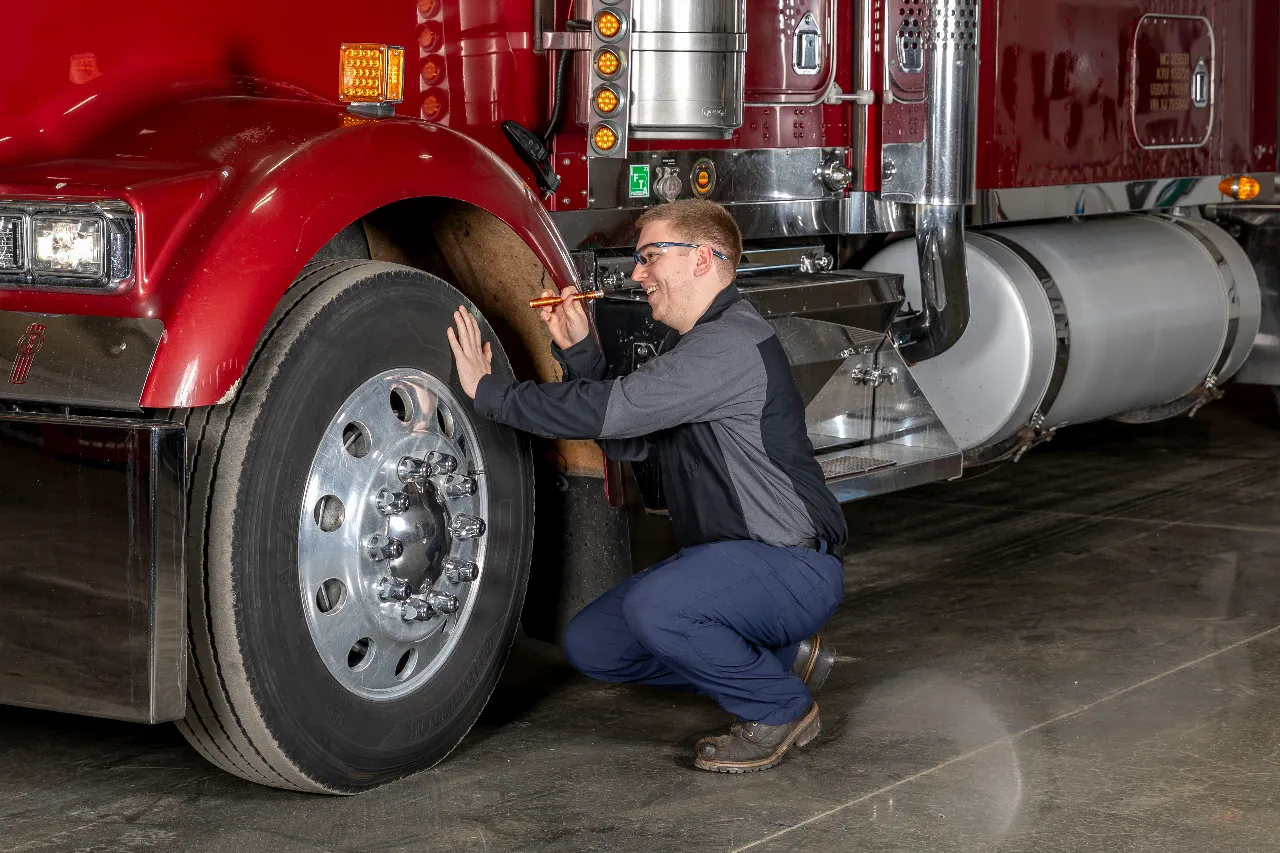How to Pass Your Next DOT Inspection Without Costly Violations
DOT inspections can be stressful, but they don't have to be. Learn how to prep for every level, avoid common violations, master pre-trip checks, and keep your paperwork—and rig—in top shape. Stay compliant, avoid fines, and keep your truck rolling confidently.

DOT inspections. Just hearing those words might make your stomach drop. But they don’t have to be a nightmare—or cost you thousands in fines and downtime. With the right prep and a solid maintenance routine, you can pass your next DOT inspection without breaking a sweat (or the bank).
Let’s dive into exactly what you need to know, what to expect, and how to stay ahead of violations that could knock your rig off the road.
Understand the DOT Inspection Levels
The Department of Transportation has six inspection levels, but most roadside inspections fall into three main categories:
Level I: Full Inspection
This is the works. The inspector checks the entire vehicle—under the hood, under the truck, and inside the cab—as well as the driver’s credentials and logs.
Level II: Walk-Around Inspection
Less invasive than Level I, but still covers essentials like brakes, tires, lights, and paperwork.
Level III: Driver-Only Inspection
Focused solely on the driver’s documentation, including your CDL, medical card, ELD logs, and HOS compliance.
Even though you never know what level you'll get hit with, it's safest to prep like a Level I is always around the corner.
Top Mechanical Violations That Will Get You Sidelined
Failing a DOT inspection usually boils down to the basics. These five areas are the most common culprits:
1. Brake System Violations
Your brake system is the #1 thing inspectors zero in on. If your slack adjusters are out of alignment or your brake shoes are worn down, you're already in violation.
Don’t wait for the warning signs. Regularly inspect:
- Air tanks
- Service chambers
- Pushrods
- Brake drums
Even a small air leak can be a big problem.
2. Tires and Wheels
You need at least 4/32" tread depth on steer tires and 2/32" on others. Any less? You’re getting flagged. Look out for:
- Uneven wear
- Sidewall bulges
- Cuts or punctures
Also, don’t forget your wheel bearings—overheating or grinding could indicate they’re failing.
3. Lighting Equipment
Lighting violations are among the easiest to avoid—and the most common. Inspect:
- Clearance lights
- Brake lights
- Turn signals
- Reflectors
Before every haul, walk around and check every bulb. If it doesn’t shine, replace it.
4. Suspension Problems
DOT inspectors check for cracked, broken, or missing suspension parts. Common red flags include:
- Leaking or deflated air bags
- Broken leaf springs
- Faulty shock absorbers
Your suspension doesn’t just support your load—it keeps your truck legal.
5. Emissions & Exhaust Issues
Modern trucks rely on after-treatment systems like the DPF, EGR, and SCR to stay compliant. If you’ve got a clogged DPF, a leaking EGR cooler, or a low DEF warning on the dash, that’s a violation waiting to happen.
Don’t Slack on the Driver-Side Checklist
Even if your truck is spotless, you can still cause a failed inspection. Make sure you carry:
- A valid CDL
- Your medical examiner’s certificate
- Up-to-date ELD logs (if required)
- Vehicle registration and proof of insurance
- Previous DVIRs
Keep everything in a well-organized binder. Inspectors appreciate a driver who comes prepared.
Master the Pre-Trip Inspection
Want a surefire way to pass a DOT stop? Nail your pre-trip inspections. They're required by law and can catch small issues before they become costly citations.
Your pre-trip checklist should cover:
Fluids: Oil, coolant, power steering, DEF
Brakes: Slack adjusters, air lines, shoes
Tires & wheels: Tread depth, inflation, lug torque
Suspension: Springs, shocks, bushings
Lights & reflectors: Function and cleanliness
Take your time. Sloppy pre-trips = expensive mistakes.
Invest in Preventive Maintenance (PM)
The best way to pass a DOT inspection is to prevent problems before they start. That’s where a solid preventive maintenance schedule comes in.
At TCB Truck Service here in Memphis, many drivers rely on our mobile PM programs to stay inspection-ready. Our techs handle:
- Brake system adjustments
- Fluid checks and changes
- Suspension inspections
- Emissions system diagnostics
A consistent PM routine extends your truck’s life and keeps your DOT score clean.
Don't Neglect the Cab
An unkempt cab isn’t a direct violation, but it sets the wrong tone. DOT inspectors are more likely to dig deep if they see trash, wires everywhere, or missing safety gear.
Keep it clean and make sure you’ve got:
- A charged fire extinguisher
- Three emergency triangles
- An undamaged seatbelt
It’s not just about passing—it’s about professionalism.
Your Attitude Matters
Here’s something drivers don’t always talk about: your attitude can influence how deep an inspector digs.
Polite, respectful drivers with their ducks in a row often get waved through faster. If you're disorganized or defensive? You’re getting the full treatment.
Final Thoughts
Passing a DOT inspection doesn’t have to be stressful. It just takes a game plan, a clean truck, and a solid maintenance routine. If you stay proactive—especially with brakes, tires, lights, suspension, and paperwork—you'll roll through inspections with confidence.
And remember, it’s not just about avoiding fines—it’s about keeping your rig safe, your business moving, and your CSA score clean.
More Articles
%20(1).webp)
Avoid These 5 Costly HVAC Repair Mistakes in Your Heavy-Duty Truck
%20(1).webp)
What Causes Suspension Failure in Heavy-Duty Trucks?

How to Keep Your Truck’s HVAC System Running Efficiently Year-Round
Contact Us
Get in touch with TCB Truck Service today to schedule service in-shop in Memphis, Tennessee, or via mobile service within 150 miles, including service to northern Mississippi & eastern Arkansas.
We're open Monday through Friday, from 7:00am to 4:00pm.

